Physical Address
304 North Cardinal St.
Dorchester Center, MA 02124
Pruritus: an unpleasant sensation of the skin that elicits a desire to scratch.
Dysesthesia: an unpleasant, abnormal sensation that can be either spontaneous or evoked; abnormal, unpleasant sensations may include pain, pruritus (“neuropathic itch”), tingling, burning, “pins and needles”.
The most common skin-related symptom in dermatology; can have a profound negative impact on a patient’s quality of life.
Results from the activation of the sensory nervous system, involving four sequential levels: the peripheral nervous system → the dorsal root ganglia → the spinal cord → and the brain.
There are multiple etiologies of pruritus, and it is often a major clinical challenge to diagnose the underlying etiology and to adequately treat.
May arise secondary to a number of conditions:
Dermatologic disorders ( Table 4.1 , Fig. 4.1 )
| Infestations/bites and stings |
|
| Inflammation |
|---|
|
| Infection |
|---|
|
| Neoplastic |
|---|
|
| Other |
|---|
|
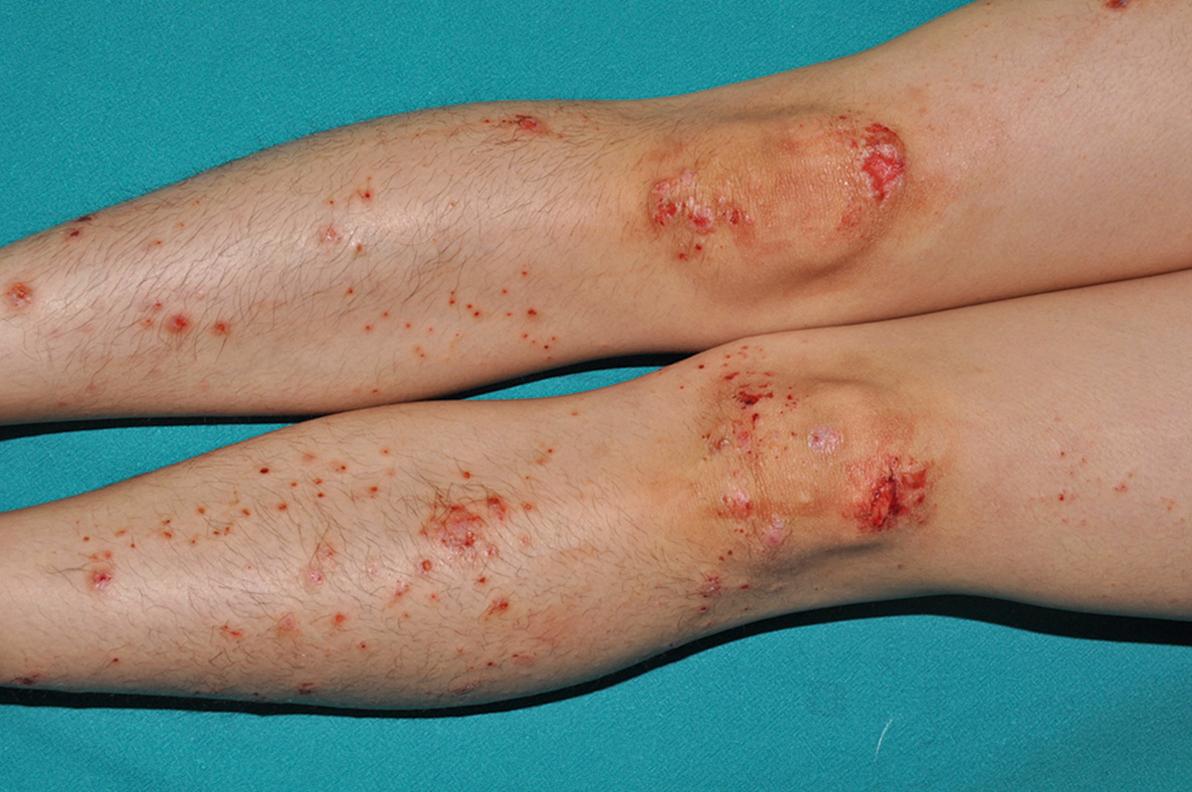
Allergic or hypersensitivity syndromes
Systemic diseases (10–25%) and malignancies ( Figs 4.2 and 4.3 )
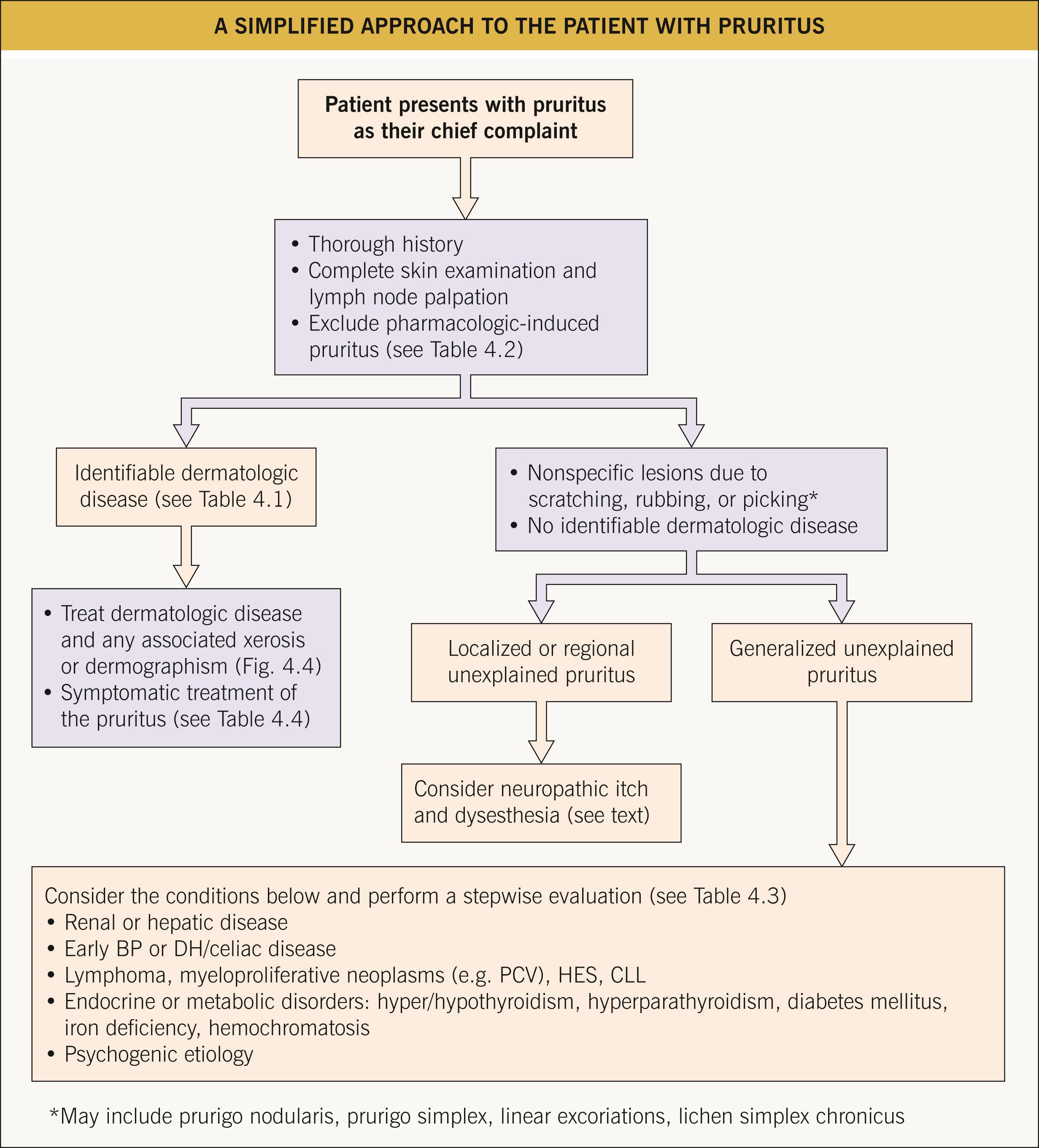
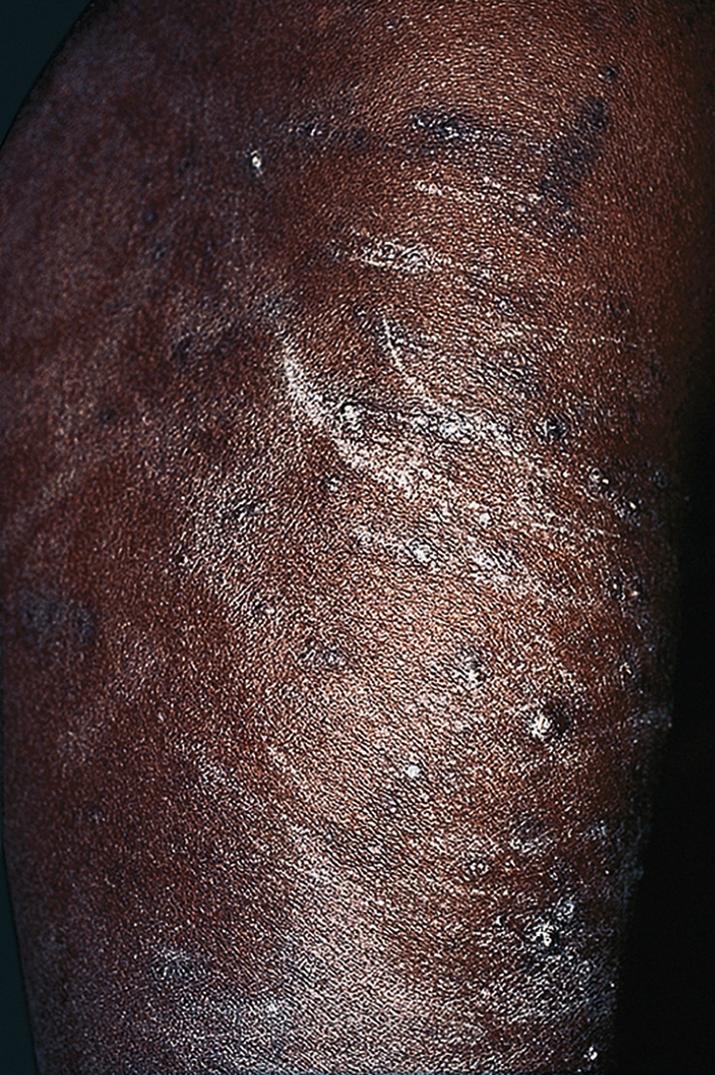
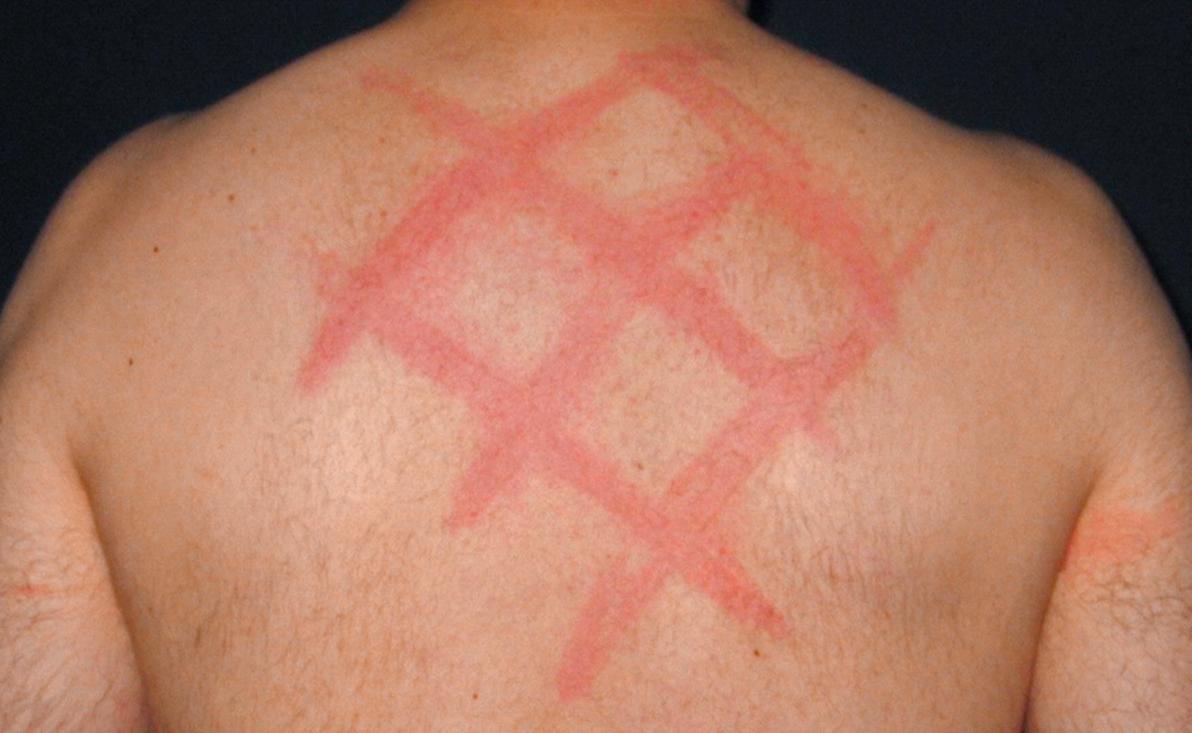
Toxins associated with kidney or liver dysfunction
Medications ( Table 4.2 )
| Most common |
| Less common |
|
∗ Pruritus is more likely with intrathecal/epidural than systemic administration.
∗∗ Also causes nonimmunologic release of histamine from mast cells.
Neurologic disorders (see text below)
Psychiatric conditions (see Ch. 5 )
May also be primary or idiopathic – that is, no readily apparent skin disease, underlying etiology, or associated condition.
Most patients with pruritus due to an underlying dermatologic disorder present with characteristic or diagnostic skin lesions (e.g. dermatitis of the flexures in atopic dermatitis; see Table 4.1 ).
In primary pruritus and secondary pruritus NOT due to an underlying dermatologic disorder, the lesions are usually nonspecific (e.g. linear excoriations [see Fig. 4.1 ], prurigo simplex, prurigo nodularis [ Figs 4.5 and 4.6 ]).
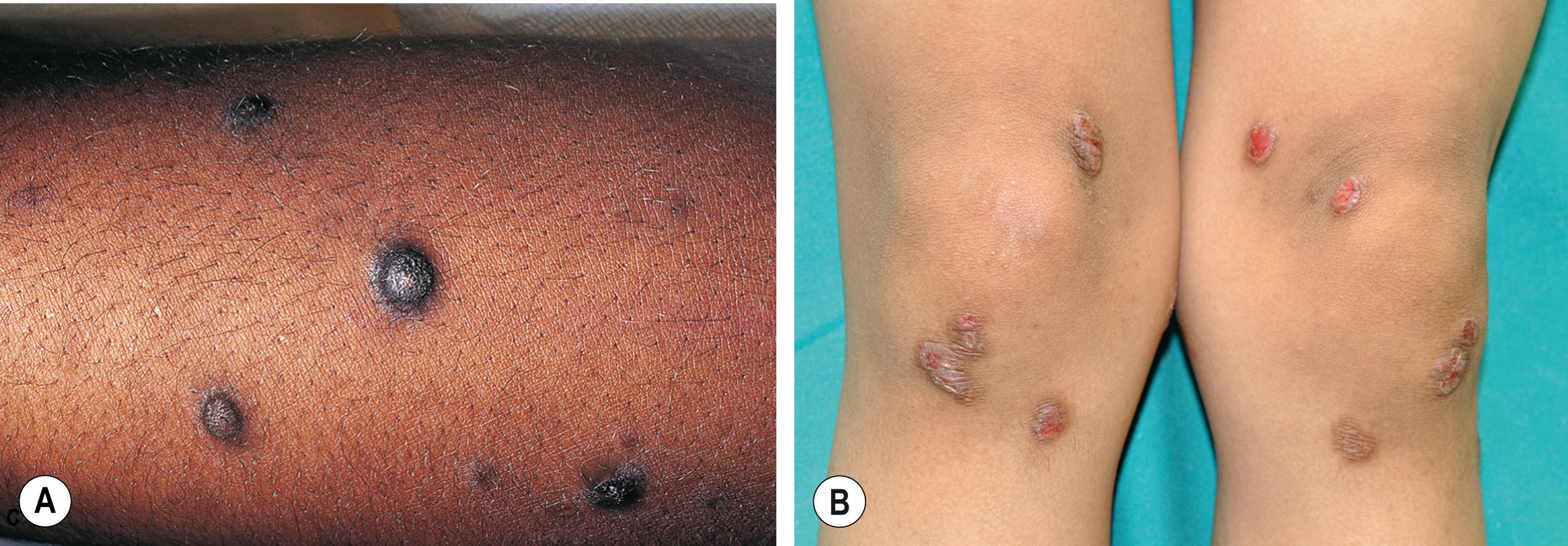
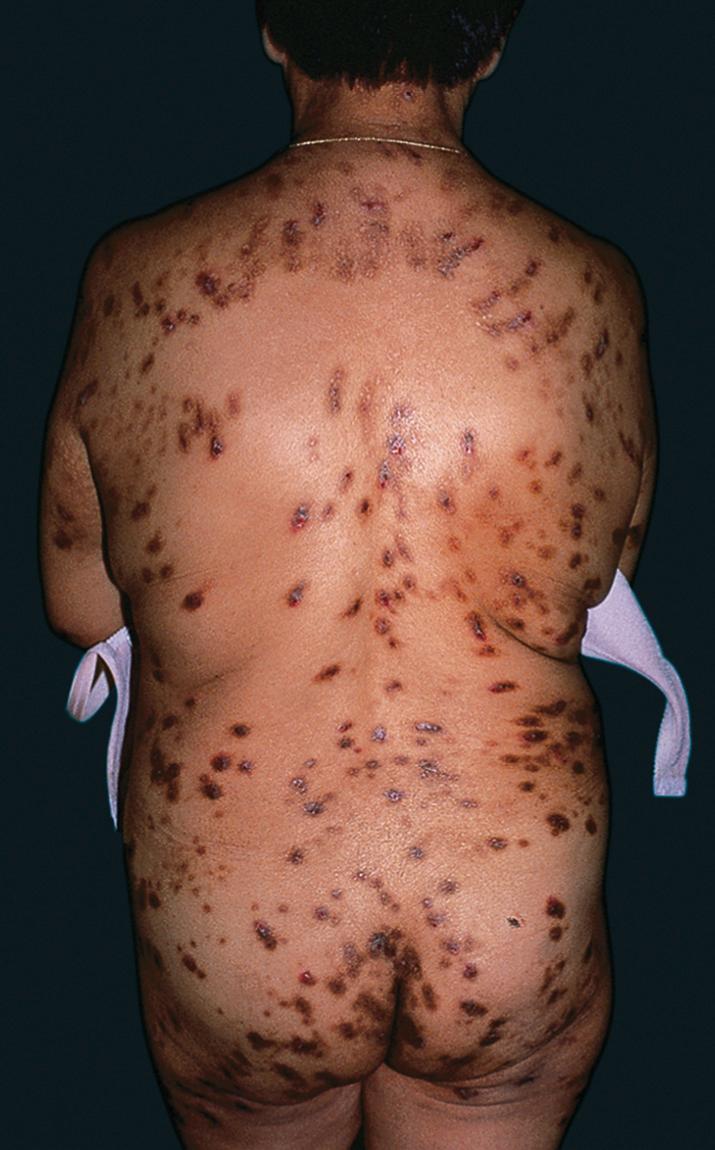
Patients with chronic, idiopathic pruritus need serial examinations because pruritus can antedate clinical manifestations of the underlying disorder (e.g. lymphoma) or with time, more specific lesions may appear (e.g. bullous pemphigoid).
Sparing of the mid upper back, an area of patient-hand inaccessibility (‘butterfly sign’) (see Fig. 4.6 ), is suggestive of pruritus NOT associated with a dermatologic disorder; note, however, this sign is not seen in those who use back scratchers or similar devices.
Aquagenic pruritus, provoked by cooling of the skin after emergence from a bath, is often idiopathic but may be a sign of polycythemia vera.
Of note, some patients may have a combination of specific and nonspecific skin lesions and both may be due to an underlying systemic disorder (e.g. eosinophilic folliculitis associated with HIV infection/AIDS).
Identifying the underlying etiology of a patient’s pruritus is important in determining the appropriate management.
A simplified approach to the patient with pruritus is presented in Fig. 4.2 and Table 4.3 .
| Basic initial evaluation |
| CBC with differential and platelet count ESR and CRP Creatinine, blood urea nitrogen, electrolytes Liver transaminases, alkaline phosphatase, bilirubin LDH Fasting glucose TSH ± free thyroxine |
| Possible additional evaluation |
|---|
| Skin biopsy |
| Routine histology (if skin lesions are present) Direct immunofluorescence studies ∗ |
| Other laboratory tests |
| Serum total and/or allergen-specific IgE Serum ferritin, iron, total iron binding capacity Hemoglobin A1c Parathyroid function (calcium, phosphate and parathyroid hormone levels) Stool for ova/parasites and/or occult blood Viral hepatitis panel (including hepatitis B and C viruses) HIV testing Anti-tissue transglutaminase ± epidermal transglutaminase IgA antibodies ∗∗ Anti-BP180 and anti-BP230 bullous pemphigoid IgG antibodies Anti-mitochondrial and anti-smooth muscle antibodies Serum tryptase, histamine, and/or chromogranin-A levels Urinalysis with sediment evaluation 24-hour urine collection for 5-hydroxyindoleacetic acid (5-HIAA; a serotonin metabolite) and porphyrins Serum protein electrophoresis, serum immunofixation electrophoresis |
| Radiographic studies |
| Chest X-ray or CT scan Abdominal and pelvic ultrasonography or CT scan Lymph node ultrasonography |
| Other investigations |
| Patch testing Prick testing for major atopy and relevant occupational allergens Age-appropriate cancer screening (in conjunction with primary care physician) If hydroxyethyl starch (HES)-induced pruritus is suspected, electron microscopy of a biopsy sample from normal-appearing skin |
∗ Biopsy perilesional skin or normal-appearing skin (in vicinity of lesions if present) to assess for bullous pemphigoid and dermatitis herpetiformis, respectively.
∗∗ Often performed in conjunction with serum total IgA; in patients with IgA deficiency, anti-tissue transglutaminase IgG antibodies should be assessed.
General treatment measures for pruritus are outlined in Table 4.4 .
| Skin care |
|
| Topicals |
|---|
|
| Systemic medications |
|---|
|
| Physical modalities |
|---|
|
| Psychological approaches |
|---|
|
| Treatment for renal pruritus |
|---|
|
| Treatment for hepatic pruritus |
|---|
|
Become a Clinical Tree membership for Full access and enjoy Unlimited articles
If you are a member. Log in here